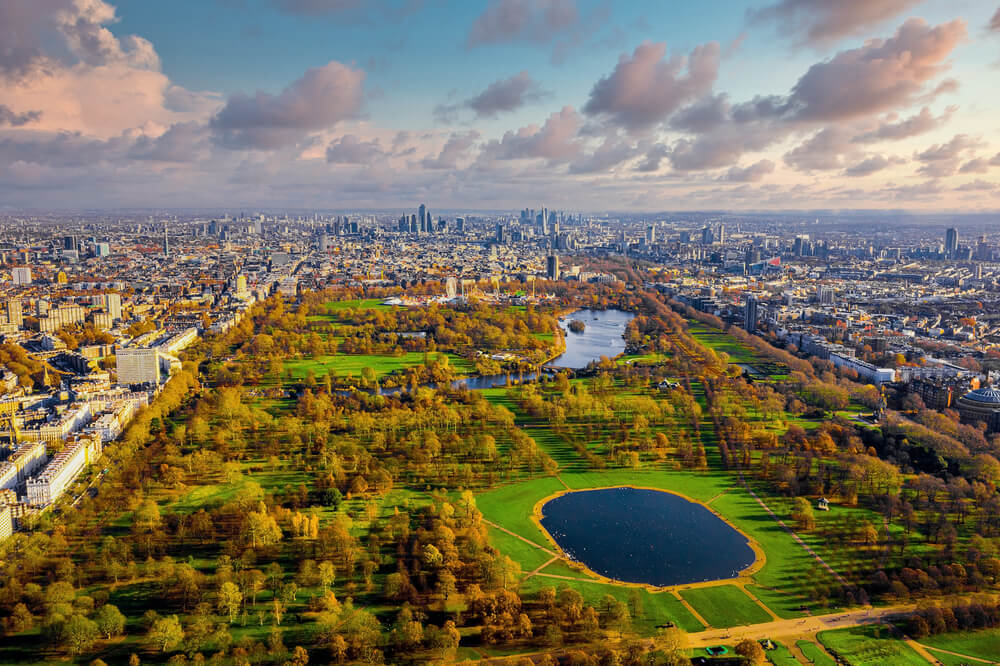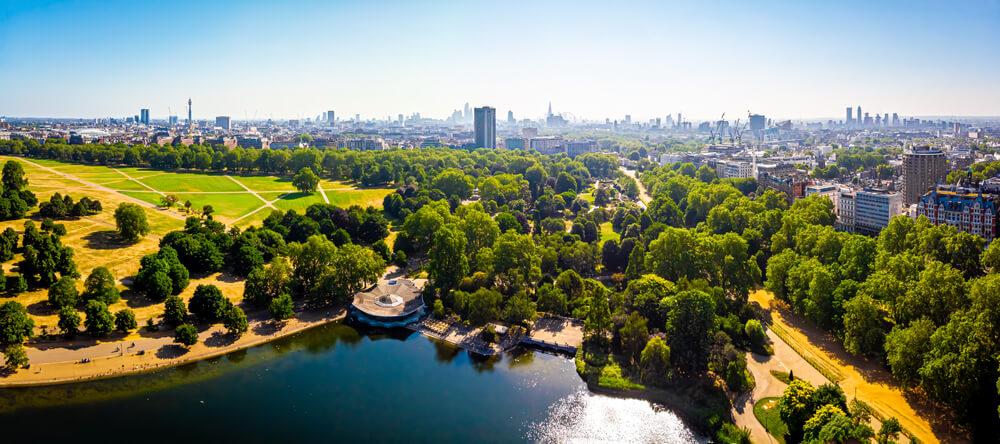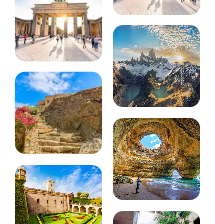Visit Hyde Park in London

Located in the heart of London, Hyde Park is the best-known park in the city and in the whole of the United Kingdom. But it’s also the largest, and the venue for a wide variety of events throughout the year. It was also the first royal park to be opened to the public, a move that marked the history of England.
You can relax, picnic, play with the kids, attend a concert in summer, and enjoy the park’s lush vegetation… It’s not for nothing that Hyde Park is one of the most popular places for Londoners and tourists alike.
Why visit Hyde Park?
- To reconnect with nature for a moment and get away from the hustle and bustle of London’s big city. It’s good to take a break every now and then, especially on holiday!
- Many events are organised each year to delight the eyes and ears: concerts, shows, festivals, etc.
- Hyde Park is next to Buckingham Palace, another of London’s must-see sights, with the Changing of the Guard.
- Pedal-boat enthusiasts can enjoy themselves on the Serpentine, the lake that separates Hyde Park from Buckingham Palace.
- Speaker’s Corner is the place where anyone can speak and give their opinion on any subject every Sunday.
- Squirrels, ducks and swans will delight young and old alike during walks with friends or family.
- What could be more romantic than a boat ride on the serpentine on a sunny day?
- The rose garden, the fountains, the statues, the monuments…
- At Christmas, Winter Wonderland comes to the park. It’s an amusement park offering a wide range of activities: an ice rink, a funfair, shows, a Christmas market with crafts and culinary specialities…
This immense (142 hectares) and majestic park is well worth a visit.
Where is Hyde Park?
Between Queensway and Marble Arch, Hyde Park is in the heart of London: an ideal break after one monument after another, or an afternoon shopping on Oxford Street.
How do I get to Hyde Park?
1 – By Tube
Knightsbride and Hyde Park Corner stops on the Piccadilly Line, or Lancaster Gate, Queensway and Marble Arch stops on the Central Line.
2 – Bus
- North London: 6, 7, 10, 16, 52, 73, 82, 390, 414
- South London: 2, 36, 137, 436
- West London: 9, 10, 14, 19, 22, 52, 74, 148, 414
- East London: 8, 15, 30, 38, 274
When was Hyde Park built?
Until 1536, Westminster Abbey owned the site. But when King Henry VIII heard about the area, which was known for its rich game, he decided to take it over in order to expand his hunting grounds. He had it fenced off to keep it private. Ponds were created so that the animals could drink, and a circular path was built so that the royal carriages could move easily around his new playground.
In 1637, King CharlesI decided to open the park to the general public, and numerous events have been held there ever since.
In the 18th century, Queen Caroline demarcated the park to create Kensington Gardens. This was followed by work on the Westbourne Stream to create an artificial lake, the Serpentine. Then, around 1820, a bridge and a new road were built between the two parks to officially distinguish Hyde Park from Kensington Gardens.
Another special feature of the park is that 41 cannon shots are fired at exactly noon on anniversaries directly linked to the Royal Family!
Practical information about Hyde Park
- Admission is free.
- The park is open from 5am to midnight.
- Among the activities on offer are: a swimming area from June to September (the lido), children’s play areas, a senior park which is actually a fitness trail with gym equipment that everyone can enjoy, a riding school, horse and pony rides, etc.
- You’re close to places of interest such as the Natural History Museum, one of Britain’s most remarkable museums, the Victoria & Albert Museum and its art deco collection, Harrods, the country’s iconic shopping centre with its many luxury boutiques, and Marble Arch, London’s triumphal arch…
200 audioguided tours for cities all around the world
Download

